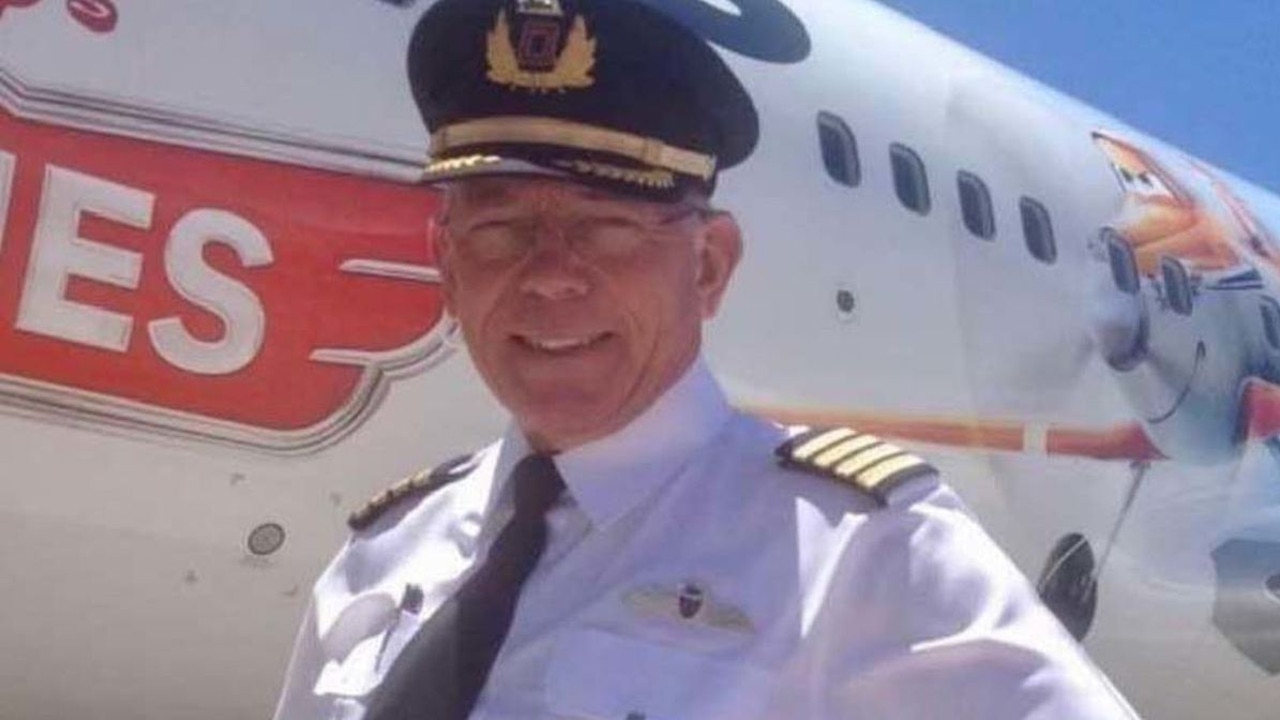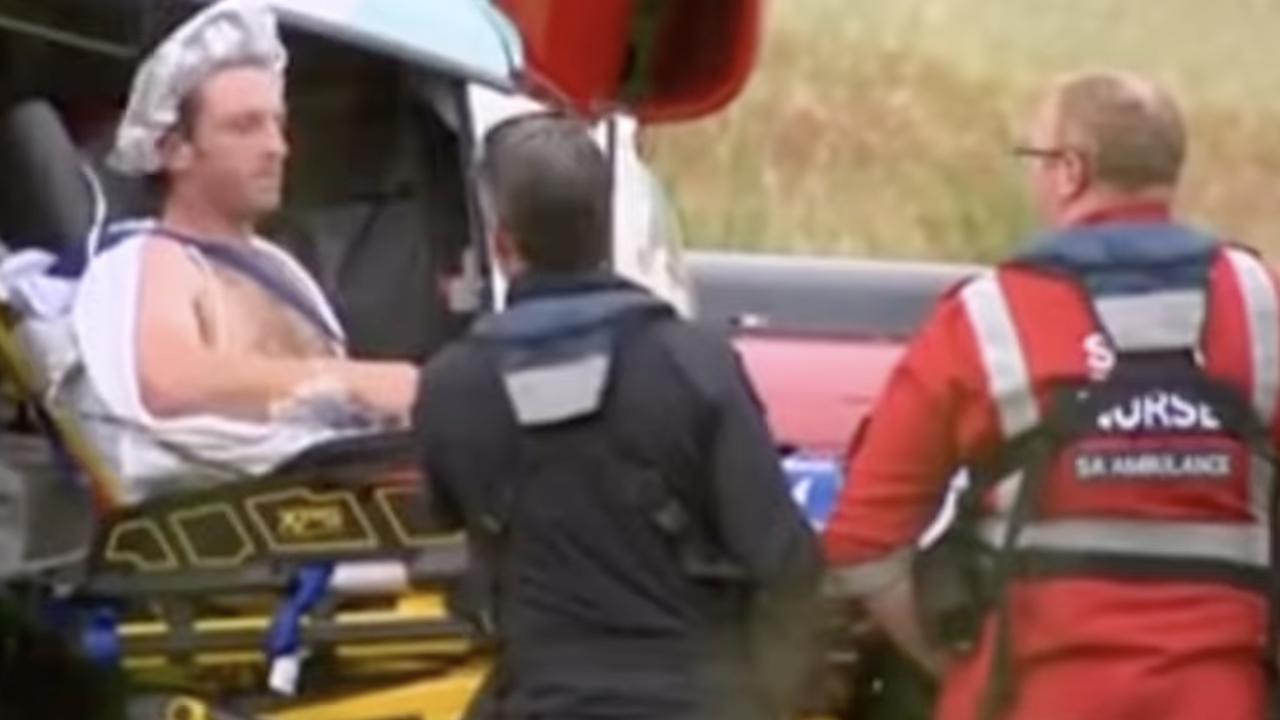How it all went wrong for cruise ship MSC Opera before collision
It was the catastrophe no one saw coming. A loss of control at the worst time possible. But the incident in Venice happens more than you think.
It’s the collision no one saw coming. A loss of control at the worst time possible.
As the 66,000-tonne ship ploughed through waters towards Venice, MSC Opera failed to slow down as it hurtled towards the passenger terminal on the Giudecca canal.
Terrified tourists watched on — with some fleeing on foot in horror — as the 275m cruise ship collided with the busy embankment and a small tourist boat.
It was a collision that injured four passengers — including two Australians — but could have been so much worse.
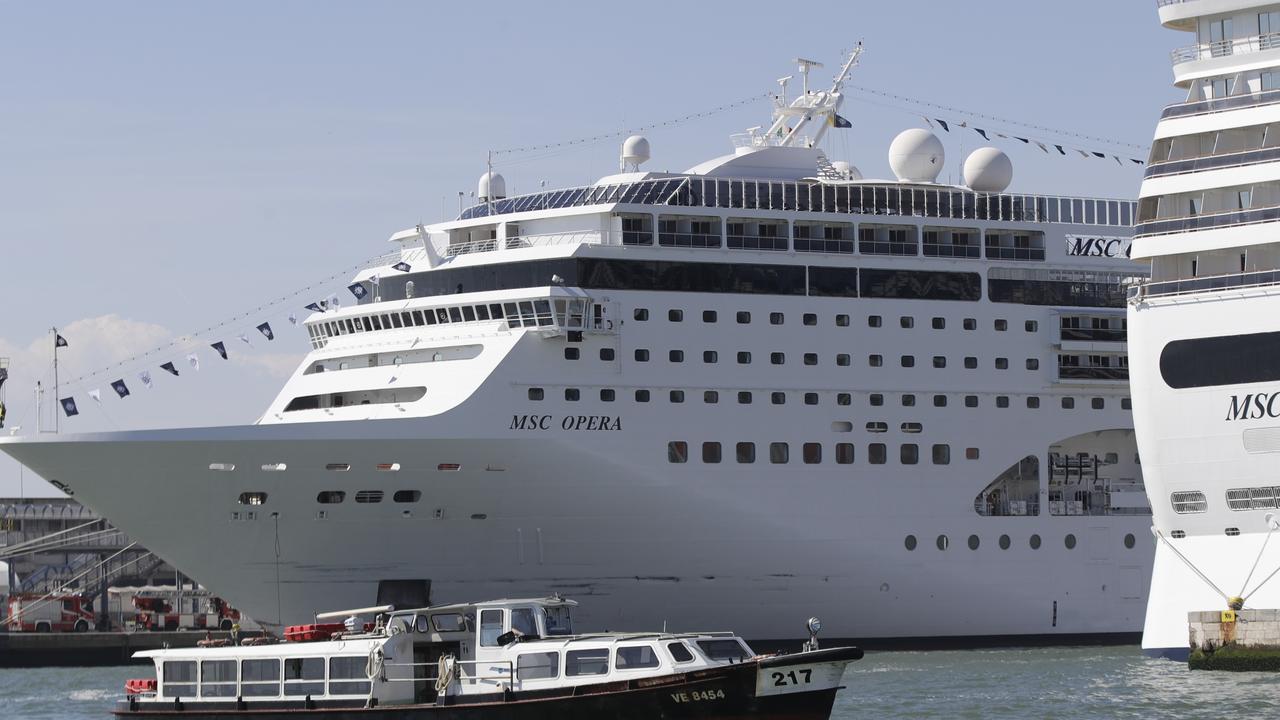
While an investigation into what happened on-board the 13-deck ship is underway, initial speculation suggests the collision may have happened after a cable used to link cruise ships to the tug boats that pull them into the city’s canals broke.
However, Davide Calderan, the head of a tugboat company involved in accompanying the ship into its berth, told Italian media the problem was in the engine.
“The MSC ship had an engine failure, which was immediately reported by the captain,” Mr Calderan said, noting the pilot was able to steer the ship to the right-hand side and stop further damage.
“The engine was blocked but with its thrust on because the speed was increasing.
“The two tug boats that had been guiding the ship into the dock tried to slow it, but one of the chains linking them to the giant snapped under the pressure.”
One Venetian resident told Italian media: “I could see the prow coming closer, and I thought it would hit my house. The noise was deafening,”
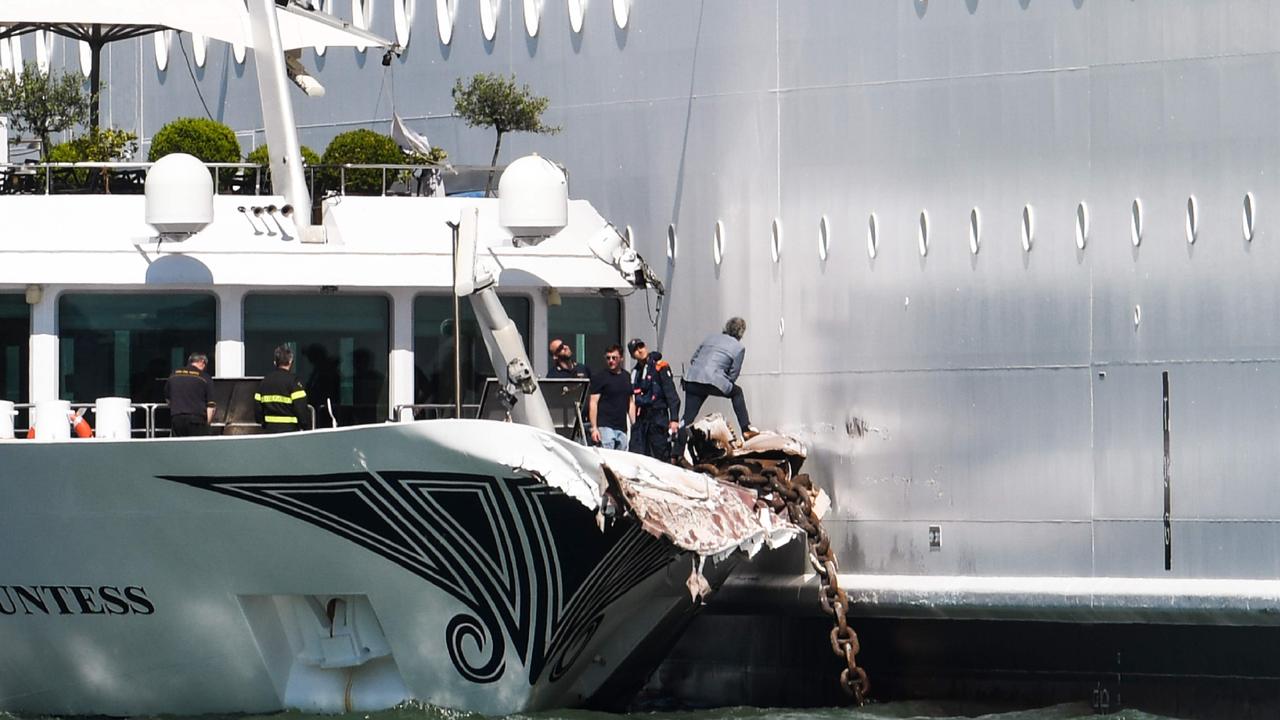
Miami-based maritime lawyer and cruise safety advocate Jim Walker says the “engine failure” isn’t uncommon, and the accident has rekindled a heated row in Italy over the risks large cruise ships pose in the canal.
#BREAKING: Tourists flee as cruise liner smashes into dock in Venice pic.twitter.com/DSIjHckYxk
— Russian Market (@russian_market) June 2, 2019
“Power failure or power loss of large cruise ships are not uncommon,” Mr Walker told news.com.au.
“Most occur when the ships have left ports … the cruise lines usually state that the propulsion failures occurred for ‘technical reasons’.
“In most cases, the power loss does not occur at critical moments. But in this case, the ship apparently lost power at a critical time as the MSC Opera was approaching port.”
Wow, this just happened outside our apartment!! pic.twitter.com/OfSOdCU2Br
— Duncan Ogle-Skan (@duncanogleskan) June 2, 2019
Mr Walker said Venice required all ships to be handled by two tugs when entering the port, with one at the bow and one at the stern
But the line at the front of the ship that reportedly failed “may have contributed to the accident”.
“An accident like this can occur due to power loss, secondary failure of bow and/or stern lines going to the accompanying tugs, poor seamanship and weather condition depending on the circumstances,” Mr Walker said.
“Cruise lines typically will not disclose the precise nature of the power failure, choosing instead to simply state that there was a disruption of power due to ‘technical reasons’.
Video by Adrian Laurettihttps://t.co/fQVQGWz1h8 pic.twitter.com/CQifKsB3lp
— andreafrison.com (@fritzprod) June 2, 2019
“The power loss involving the MSC Opera occurred during a critical moment. This is not the first time that any MSC cruise ship struck a pier in Venice. The MSC Prezioss collided with a peer and damaged part of a maritime station five years ago.”
According to Mr Walker, in 2016 alone there were at least 18 power losses on board cruise ships, either complete or partial, operated by the major US-based lines.
The veteran maritime lawyer said when a loss of power occurred at such a “critical moment”, the captain or master lost all control.
“Crew ships typically have redundant power systems, however it is not possible for a secondary power source to immediately or instantaneously activate in time to avert an accident like this,” he explained, noting there was nothing the captain could’ve done to avoid the collision.
“The captain of the cruise ship remains responsible (practically and legally) even when a local pilot is aboard.
“The pilots may have greater familiarity with the ports, however the ships are always under the command in orders of the master.”
The most recent incident of power loss occurred in March when the Viking Sky cruise ship lost power as it sailed towards Stavanger, Norway in heavy seas.

The Viking Sky was carrying 1373 passengers and crew when it had engine trouble during a storm off the western coast of Norway. Afraid of dashing up on the rocks, the crew anchored amid heavy seas and high winds and an operation began to evacuate everyone on board.
More than 475 passengers were flown one by one off the ship as it bobbed at sea.
As weather eased, a decision was made to halt the rescues and head to Molde, which it reached 24 hours after alarm bells were initially raised.
The collision on Sunday has reignited the protest around ships docking in Venice. For many, the crash served as a wake-up call with opponents arguing cruise ships are out of scale for Venice, cause pollution, endanger the lagoon’s ecosystem and are a danger.
“Obviously, we’ve seen today that our worst fears have come true,” said Jane Da Mosto, an environmental scientist and executive director of We Are Here Venice. Her group backs efforts to ban cruise ships from Venice.
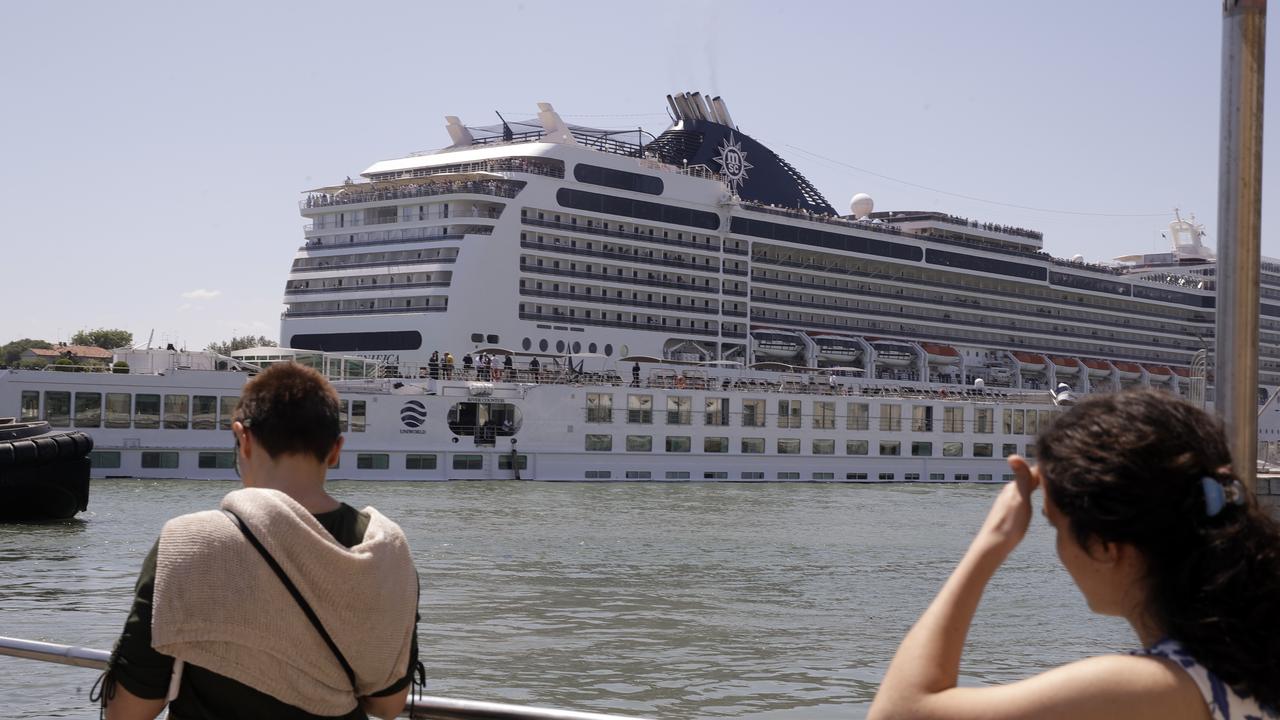
“There were 111 people on the river cruise boat that the big ship crashed into. They could have all died,” she said. She said the cruise ship could have ploughed through the concrete embankment and “hit houses, monuments and crowds of people”.
“The port authority, the government ministers, the other institutions have often tried to ridicule the resistance movement against the cruise ships, saying that an accident like this could never occur,” she added. “The Government shouldn’t be so weak in giving in to the pressure of the lobby groups, like the cruise ship companies.”
Mr Walker said cruise ships had become too large for the area.
“(The ships) present too much of a danger to a historian city like Venice,” he said, noting this could happen again if a change in route is not made.
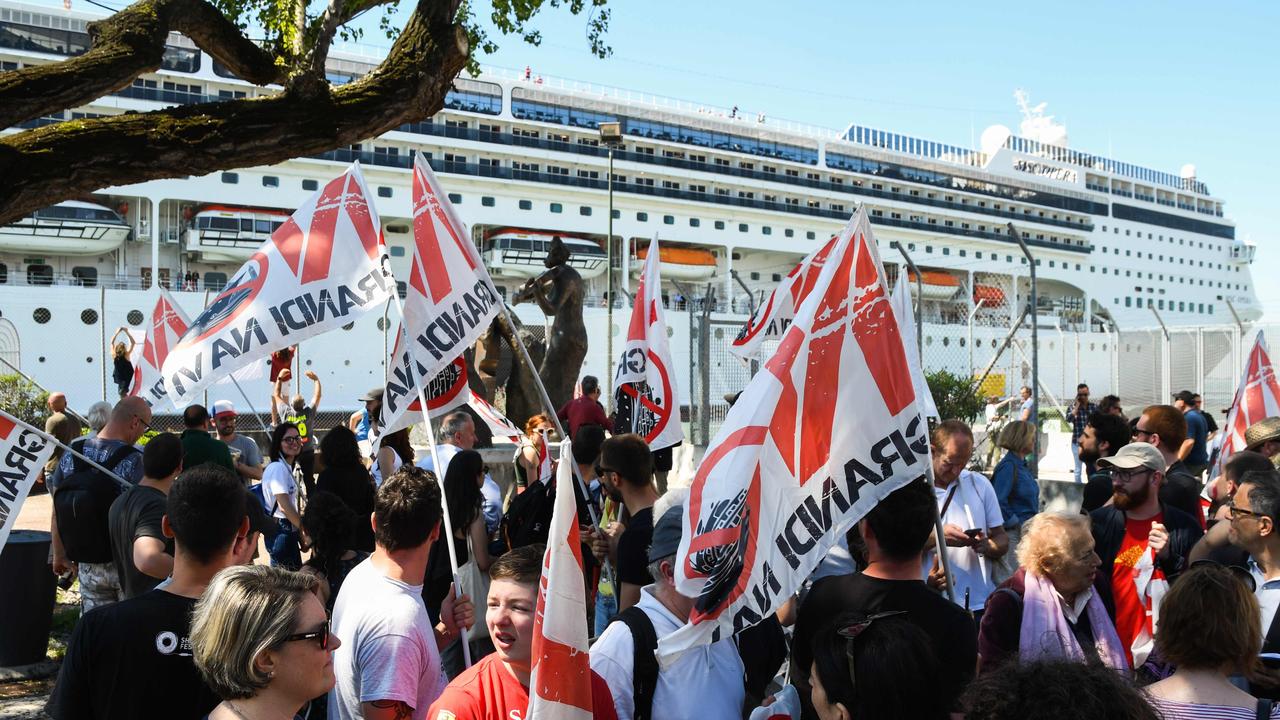
“There have been a number of proposed resolutions to this problem, including barring ships over 100,000 gross tonnes from entering the port.
“There are also suggestions that ships should anchor and ferry the tourists into the city.”
The collision came four days after a river cruise ship collided with a sightseeing boat carrying South Korean tourists in Hungary’s capital, killing seven and leaving 21 others missing.
- with Rohan Smith


